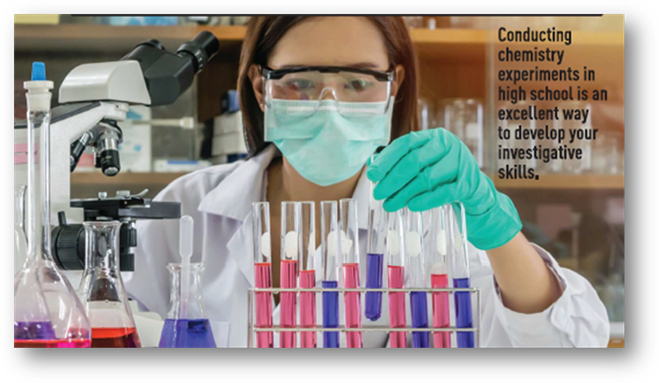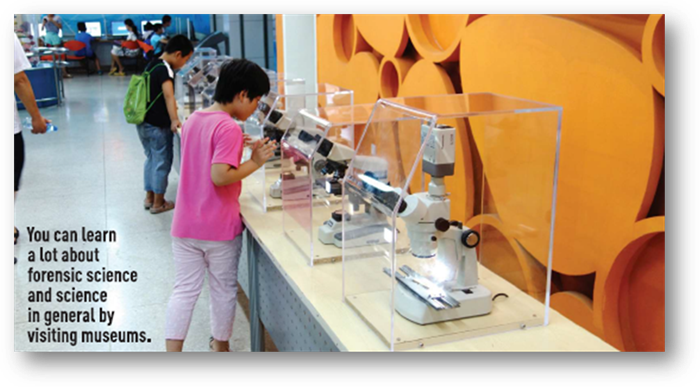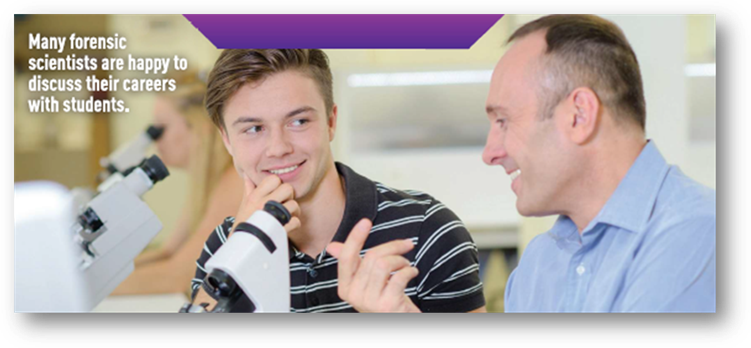Exploring Forensic Science as a Student
Methods of
Exploration
1. Do Experiments and
Activities
An example would be to study a
crime scene. You could collect trace evidence such as hair, paint chips, and
clothing fibers. Examine hair under a microscope, dust for fingerprints, look
for footprints, and record all the “clues” you find in a notebook.
2. Volunteer
For example, students ages
fourteen through eighteen can volunteer with the Association of Women in
Forensic Science to understand forensic science and get help preparing for
college. Volunteers will learn the truth behind common myths about forensic
science, work with a mentor, and be able to participate in community service
activities.

Figure 1- Forensic Science textbook
3. Visit a Museum
Many science museums have
exhibits or workshops that focus on forensic science. Some museums offer
programs that allow groups of students to explore forensic science. These
usually require a small fee. For example, the Spy Museum in Washington, D.C.,
offers the one-day Forensics of Espionage program to students in grades seven
and up. Using actual FBI forensic equipment and tools, participants study
evidence and use the scientific method to determine the identity of a double
agent.

Figure 2- Forensic Science Textbook
4. Visit a Forensic
Science Website
Many informational and
interactive websites will help you explore forensic science and even try to
solve an imaginary crime. Here is a list of fun and informational websites:
2. What
is forensic science? | BBC Science Focus Magazine
3. Careers in Forensic
Science | American Academy of Forensic Sciences (aafs.org)
5. Attend a Summer Camp
Participating in a summer camp
is an excellent way to investigate forensic science and build your skills.
These camps are offered by forensic science associations, government agencies,
colleges, high schools, community groups, companies, and other organizations.
6. Join the Scouts
The Boy Scouts and Girl Scouts
are membership organizations for boys and girls ages five to eighteen. These
organizations will help you to become a better person and citizen. They offer
many opportunities to learn things that you didn’t know before. When you learn
something new in Scouts, you usually receive a merit badge or another award. If
you are a boy or a girl in the United States, you can join the Boy Scouts of
America and earn merit badges in Chemistry and Fingerprinting.
7. Interview a Forensic Scientist
Participating in an information
interview with a forensic scientist or technician will provide you with a
deeper understanding of what a career in the field is like, what education and
other training you need to complete, the best and worst parts of the job, and
answers to almost any other question you can think of. This process is just a
conversation a student can have with someone in a particular position that
helps them learn more about a career. A few examples of some questions include:
“Can you tell me about a day in your life on the job?” or “What are the most
important personal and professional qualities for people in your career?”.

Figure 3- Forensic Science Textbook
Let’s
Practice
 Complete the questions for this section.
Complete the questions for this section.